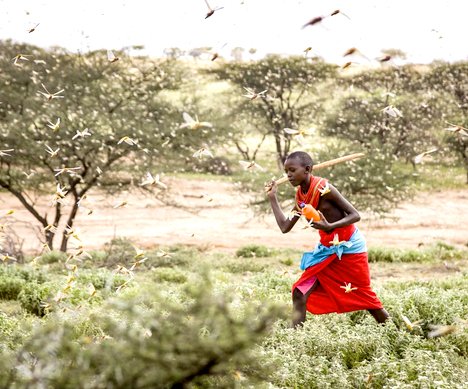

Billions of desert locusts are swarming across eastern Africa—mainly affecting Kenya, Somalia, Ethiopia, Uganda and Tanzania and have now crossed over into South Sudan who is already reeling from widespread hunger and years of civil war.
The swarms are massive: one of the largest in Kenya is about 37 miles long and 25 miles wide. For reference, that could cover more than half of NDG. The swarms, which are dense enough at times to block out sunlight, are the worst to hit Ethiopia and Somalia in 25 years, and the worst in Kenya in 70 years.
Desert locusts can travel up to 150km (95 miles) in a day and eat their own body weight in greenery, meaning a swarm just one square kilometer can eat as much food as 35,000 people in a day, according to the United Nations.
The invasion is causing food shortages in a region where up to 25 million people are already suffering after three consecutive years of droughts and floods.
According to scientists on the ground, the locusts were mature and looking for breeding grounds that would form the basis of the next major infestation.
The next rainy season in eastern Africa will begin in March, which will bring a new wave of vegetation growth and locust breeding. Female locusts only lay their eggs when the ground is damp.
While swarming, which is also called their “gregarious” phase, the locusts lay egg pods of about 80 eggs that usually hatch within two weeks. Factoring in hatching and survival rates, each pod leads to about 16 to 20 adult locusts, which mature in two to four months and repeat the cycle.
To address the crisis, relief groups such as Action Against Hunger is providing immediate relief for families suffering from hunger.















